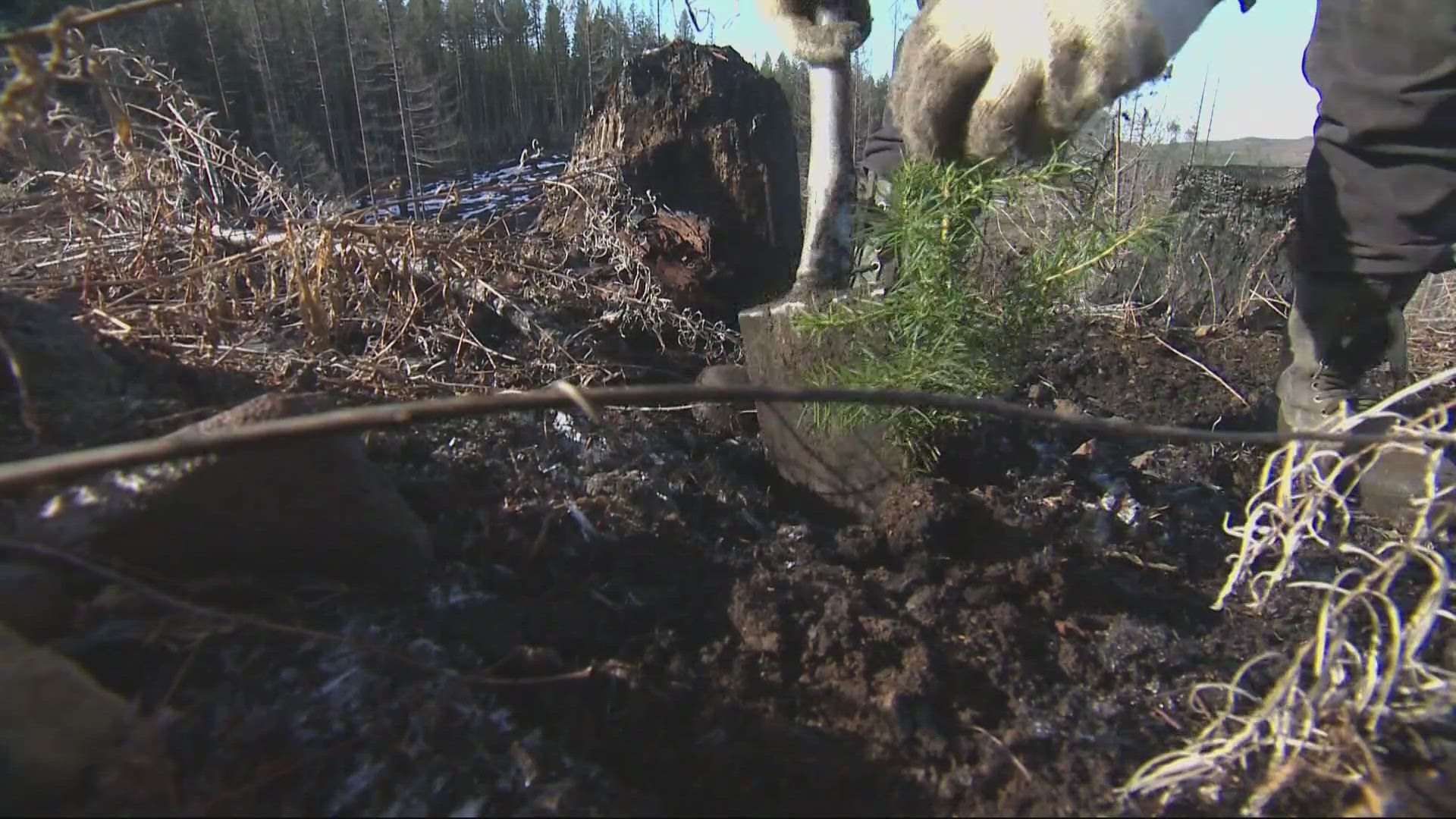PORTLAND, Ore. — Capturing the attention of nearly 20,000 people when it first bloomed in 2019, Titan VanCoug, the corpse flower that lives on the first floor of Washington State University Vancouver’s Science and Engineering Building, is about to bloom again.
WSU said based on previous blooms, they expect this one to emerge sometime around the end of July or beginning of August.
The largest unbranched flowering plant in the world, the corpse flower fascinates many with its massive size and short bloom, lasting roughly two to three days, and the powerful stink it emits during peak bloom, which people compare to the smell of dead flesh.
This year marks the third time this pungent plant will emerge in as many years. Researchers at WSU said the plant flowering this frequently is exceedingly rare, with mature plants typically flowering once every four to six years.
One theory the plant's caretaker, Dawn Freeman, offers is that Titan VanCoug is a late bloomer (pun fully intended) and is making up for lost time after taking 17 years to fully mature and flower, as opposed to the 7-10 years it usually takes.
However, a more likely explanation, according to Freeman, is that Titan isn't a singular corpse flower but instead as many as four plants sharing the same pot.
“We don’t know what’s going on under the dirt,” Freeman said in an article published by WSU Insider. “I was hoping to get in and find out this summer, but because we keep having blooms, so I’ve had to wait to ensure I’m not disturbing things.”
If there are in fact more than one corpse flower corm, a part of the plant similar to a potato tuber that stores energy to survive adverse conditions and stays underground, Freeman said she would like to separate the plants once in a state of dormancy to grow in separate pots.
While a new green house would need to be build to accommodate the new plants at the Vancouver campus, ideally Freeman hopes to make connections with other universities and botanical gardens to distribute seeds so they can have their own corpse flowers if they can be properly cared for.
Previous blooms
Titan VanCoug was originally planted in 2002 by Steve Sylvester, an emeritus professor in the College of Arts and Sciences, and has bloomed a total of four times.
As mentioned, the first time Titan VanCoug bloomed was in 2019 in mid-July. WSU Vancouver estimates that bloom prompted 20,000 people to visit the campus to see (and smell) the flower in bloom.
While the bloom meant the flower was successfully pollinated, the fruit it produced was not so successful, molding before researchers could collect seeds from them.
The plant went into dormancy the next year right as Freeman stepped in as caretaker.
“The joke was that I killed it in my first year of maintaining it,” Freeman said.
That was not the case as two years later in 2022, Titan VanCoug bloomed again, and with a few tweaks to the care routine such as increasing airflow and applying apple cider vinegar to prevent molding, they were able to collect new seeds.
In 2023, Titan VanCoug bloomed again in late June. Despite some issues with mold that year, one of the seeds collected from Titan was successfully germinated, which is when a seed officially sprouts.
Life of a corpse flower
The life of a corpse flower starts with planting a seed which will grow and develop a corm.
After germination, the corm will sprout a single leaf shoot that's around 6 inches tall. Then the leaf stalk dies out, moving the energy it collected to the corm. Roughly six months later, the corm will sprout a new, taller leaf shoot will grow again.
This will repeat for several years with the leaf shoot growing to upwards of 8 feet tall.


When the corm has enough energy, it sprouts in a different way than it does for the leaf shoot, producing a bud that grows for about two weeks before opening up into a ginormous flower with a cone-like growth sticking straight out of the middle.
The cone heats up to spread the plant's funky odor, combined with it's flesh-like colors, hoping to seduce a pollinators like flies, corpse flies, dung beetles into thinking it's something more like a dead body.
After two to three days, the bloom will collapse and die off as the plant begins growing a cluster of fruits, each containing up to two seeds after six to twelve months of maturing.
The seeds can then be harvested and the plant will return to being a corm underground ready to start the cycle anew, repeating it every four to six years across an up to 40-year-long lifespan.
How to see Titan VanCoug when it blooms
In preparation for the upcoming bloom, WSU Vancouver has set up a livestream of Titan VanCoug on their YouTube page.
However, Freeman said seeing pictures of the corpse flower rarely does the "delicate-yet-foul-smelling" plant justice and encourages people to see it in person if they are able.
WSU says based on previous blooms, they expect this one to emerge sometime around the end of July or beginning of August.
The plant is usually taken outside as soon as it blooms because of its smell.
Community members will be able to view it in person and can check WSU Vancouver's website for updates.



